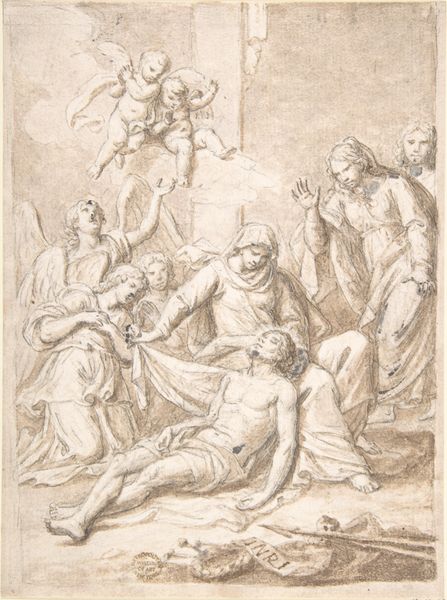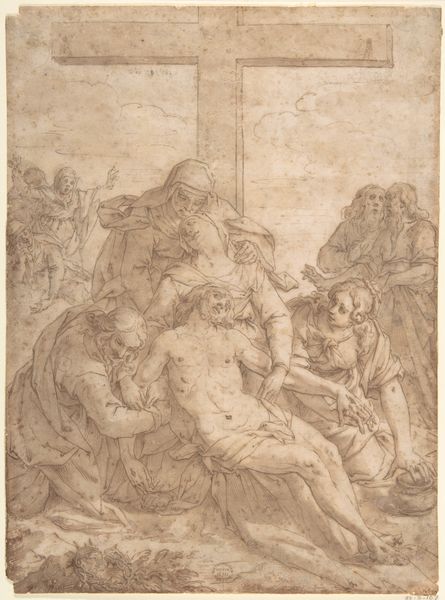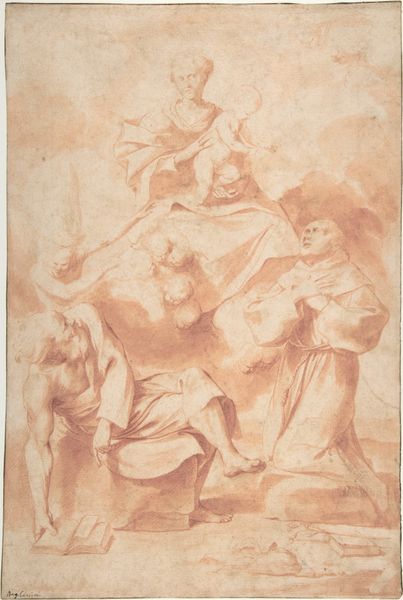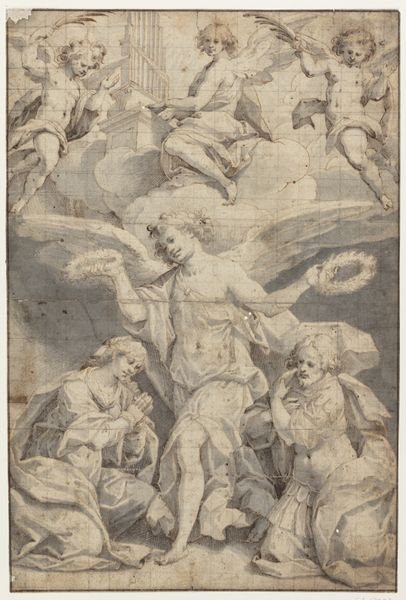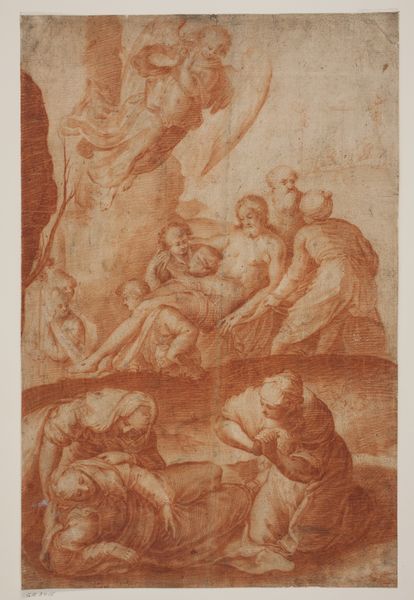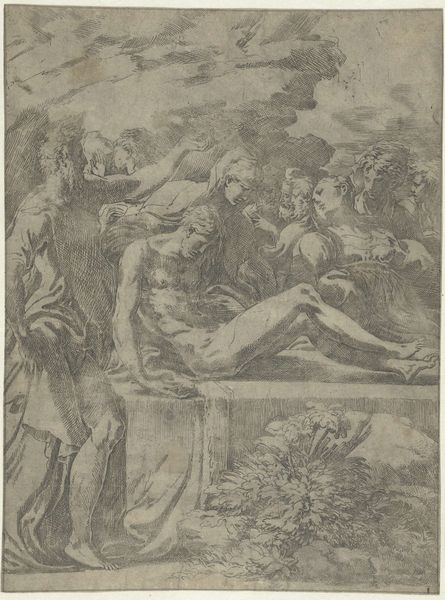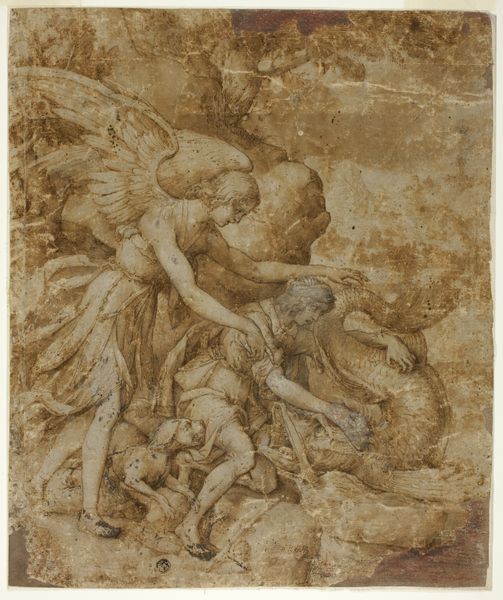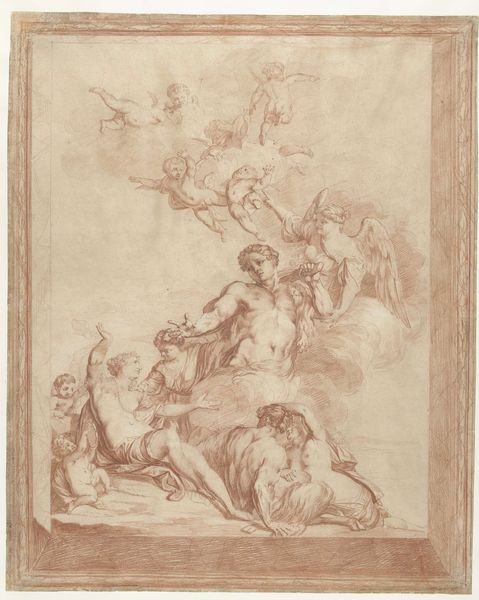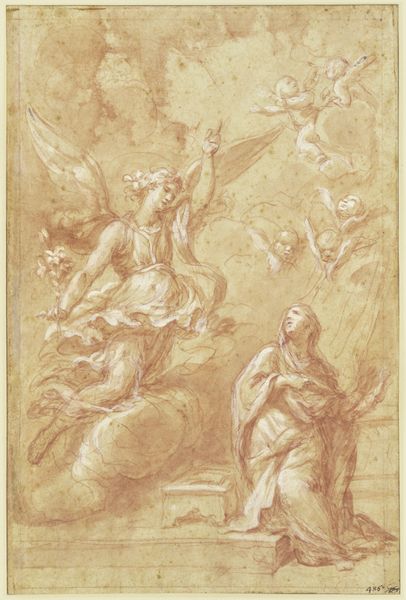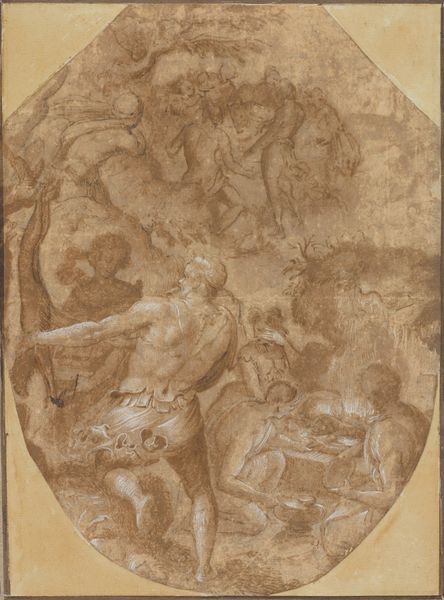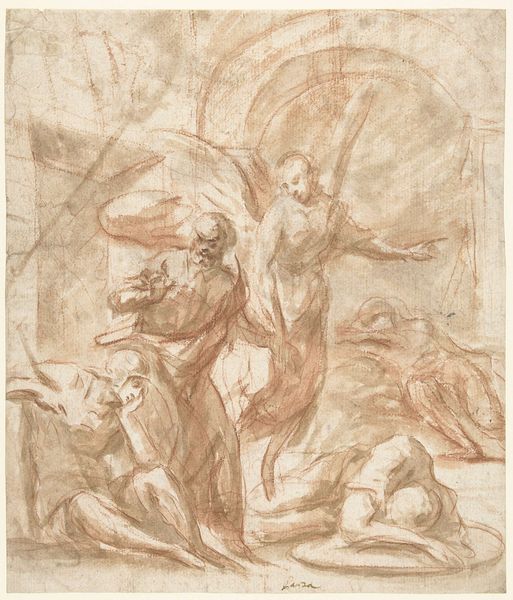
drawing, pencil, pen
#
drawing
#
narrative-art
#
baroque
#
pencil sketch
#
figuration
#
pencil drawing
#
pencil
#
pen
#
history-painting
Dimensions: height 545 mm, width 407 mm
Copyright: Rijks Museum: Open Domain
Curator: What a profoundly moving work. This is a drawing called "The Entombment of Christ by Angels." It's believed to be from the period between 1641 and 1700, and the artist, sadly, remains anonymous. It’s currently held here at the Rijksmuseum. Editor: Immediately, I’m struck by the intense diagonals in the composition. The body of Christ creates a strong horizontal, but then the angels' wings and the figures on the left just cut right across it, infusing a sense of dynamic movement. The reddish-brown tone, is it sanguine perhaps?, adds an antique and melancholy air. Curator: Absolutely. Sanguine drawings were favored for their ability to capture the nuances of flesh tones and emotions during this era. This work speaks volumes about mourning and reverence, but consider how artistic depictions of Christ's body were politically loaded. Representations shifted during the reformation and the Baroque, emphasizing both his divinity and his human suffering. The choice to portray angels attending to Christ reframes traditional interpretations. It’s like, who has access to the sacred in this moment? What statement does that make, intentionally or unintentionally? Editor: And the line work itself. See how the artist utilizes hatching and cross-hatching to create depth and volume. There is the subtle contrast that guides your eyes to the main subject - Christ. His body is paler, it’s an illusion, in fact, created by less intense hatching against the more dramatic red. Curator: The very vulnerability depicted in his human form becomes a point of intersection with those marginalized by the systems of power prevalent during that period, but those figures such as Mary or other holy women. It makes this scene universal while reflecting period specific religious tensions. Editor: This kind of somber elegance. The way the artist manages to blend drama and detail, particularly in the wings and fabric, with that very constrained palette – it's what makes this piece so captivating. Curator: The layering of socio-political readings alongside its formal and technical execution allows for a greater appreciation for the historical conditions. And in turn, how artworks become powerful cultural objects with agency to engage future generations. Editor: Indeed. It seems what at first glance might appear like a traditional religious scene offers an endless array of interpretations for a modern observer, even in a drawing like this.
Comments
No comments
Be the first to comment and join the conversation on the ultimate creative platform.
